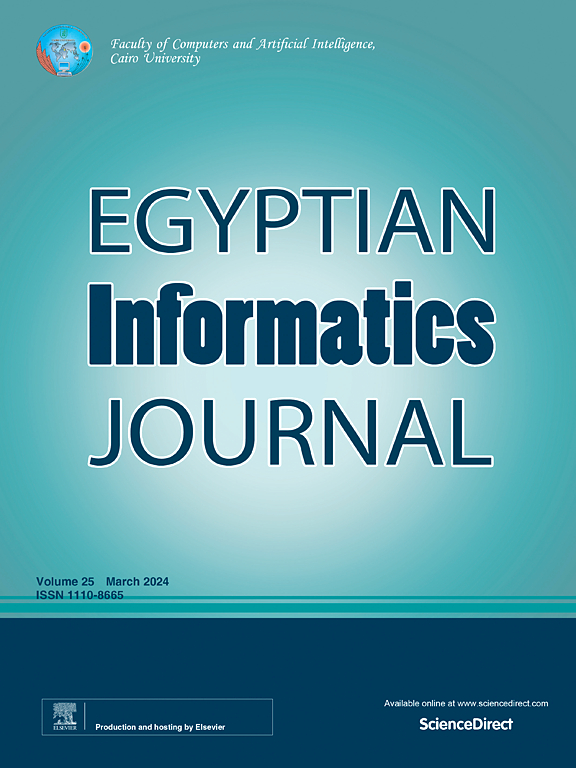利用EfficientNetV2-B2深度伪造检测技术,完善数字安全
IF 4.3
3区 计算机科学
Q1 COMPUTER SCIENCE, ARTIFICIAL INTELLIGENCE
引用次数: 0
摘要
数字图像的兴起使得研究包括媒体和网络安全在内的各个行业的真实图像验证的强大解决方案变得非常重要。Deepfake技术的发展损害了数字媒体的有效性,需要先进的检测来解决。利用高效卷积神经网络的一种新改进——EfficientNetV2-B2,本研究提出了一种分离深度假图像和真实图像的强大方法。为了确保比例相等,本文使用了一个平衡的数据集,该数据集由10万张照片组成,平均分为真实世界和深度假类。方法包括图像预处理到相同的尺寸,模型强度增强技术,严格的训练过程与参数优化精度。有趣的是,本研究采用了独立的学习率调整方法来提高训练性能,从而得到了更好的模型校准。实验设置结果表明,该模型的分类准确率达到了惊人的99.885%,并获得了较高的F1分数,从而建立了该模型在深度伪造检测中的能力。广泛的探索也证实了明显的误分类情况,这表明了训练模型和图像处理程序需要改进的地方。结果表明,在对照片验证精度要求较高的情况下,应用EfficientNetV2-B2具有广阔的前景。本文章由计算机程序翻译,如有差异,请以英文原文为准。
Refining digital security with EfficientNetV2-B2 deepfake detection techniques
The rise in digitally altered images has made research on robust solutions for real image verification across sectors, including media and cybersecurity very essential. Deepfake technology’s development compromises digital media’s validity and calls for advanced detection to address. With EfficientNetV2-B2, a novel improvement in convolutional neural networks that is considered efficient and effective, the present research proposes a strong method for separating deepfake and real images. To ensure equal ratio, the paper utilized a balanced dataset consisting of 100,000 photos divided equally between real-world and deepfake classes. Methodology involved image preprocessing to the same dimensions, model strength augmentation techniques, and a rigorous training process with parameter optimization for precision. Interestingly, the study employed an independent learning rate adjustment method for enhancing training performance, resulting in better model calibration. Experiment setup results showed a staggering 99.885 % in classification accuracy and a corresponding high F1 score, thereby establishing the capability of the model in deepfake detection. Extensive exploration also confirmed there were evident cases of misclassification, which indicated areas where training model and image processing procedures should be improved. The results illustrate the prospect of applying EfficientNetV2-B2 in situations where high accuracy is needed in photo verification.
求助全文
通过发布文献求助,成功后即可免费获取论文全文。
去求助
来源期刊

Egyptian Informatics Journal
Decision Sciences-Management Science and Operations Research
CiteScore
11.10
自引率
1.90%
发文量
59
审稿时长
110 days
期刊介绍:
The Egyptian Informatics Journal is published by the Faculty of Computers and Artificial Intelligence, Cairo University. This Journal provides a forum for the state-of-the-art research and development in the fields of computing, including computer sciences, information technologies, information systems, operations research and decision support. Innovative and not-previously-published work in subjects covered by the Journal is encouraged to be submitted, whether from academic, research or commercial sources.
 求助内容:
求助内容: 应助结果提醒方式:
应助结果提醒方式:


